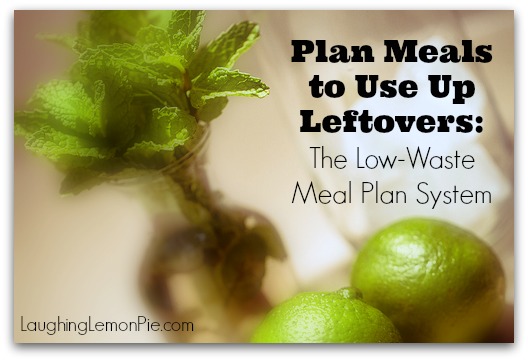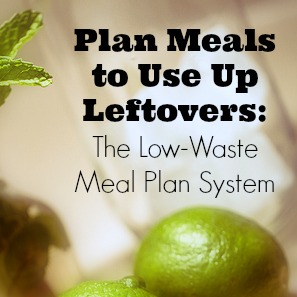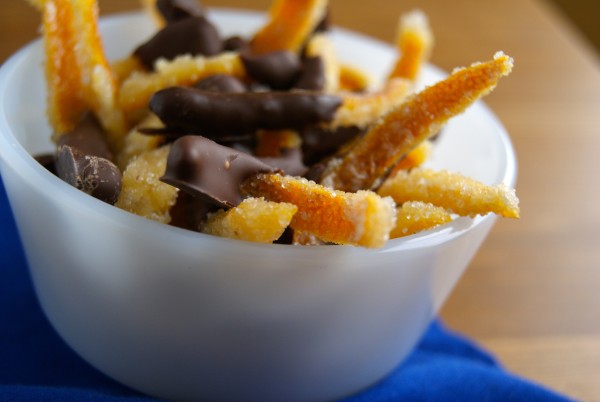A couple of weeks ago, I posted the latest in my meal planning series of budget-friendly organic meal plans, and a lot of the comments I received had to do with the fact that people LOVED that you used up what you bought for meal No. 1 in meals No. 2, 3, 4, etc. It seemed like maybe that’s something people struggle with.
And I get it. I have struggled with that, too. You want to cook a recipe on Saturday that calls for chopped fresh dill, so you dutifully buy a bunch of dill at the market, and use a little bit—maybe a third or less even—for your recipe. Then the dill gets put back in the fridge and forgotten! It goes off, gets moldy, or wilts beyond recovery and gets thrown into the trash can or compost bin. Not only is that wasting food, it’s also wasting money (because we all know fresh organic herbs ain’t cheap).
It’s somehow even worse if it’s something like a head of cauliflower or some leftover cooked cabbage that you had more of than the rest of the meal.
In my meal planning ebook, I outline a step-by-step process for planning your meals out each week, and I talk about planning around grocery store sales and what you have on hand.
But planning to use your leftovers is just another tiny half-step in that process.

When you sit down to plan your meals, you want to take a lot of things into consideration; when you’re meal planning on a budget, one big consideration ought to be what’s on sale at your favorite store(s) that week. (I go over all of this in-depth in the ebook.)
I like to start by looking at the proteins—both what I have on hand and what’s on sale.
Let’s pretend that wild-caught cod is on sale this week (as it was for me last week). I’ll think about what I can make with cod, and I know my family loves fish and chips, so I’ll put that on my menu along with cole slaw and fruit salad as side dishes.
OK, now the likelihood is that I’ll have some cabbage leftover. We don’t eat an entire head’s worth of cole slaw at one sitting! So then I’ll start thinking about what else I can do with cabbage. Cabbage is good in stir fry, so maybe I’ll plan a tofu stir fry for another night.
But then I think, hmmm. If I buy extra cod and cook it all at once when I make the fish and chips, I’ll have enough for fish tacos later in the week. Plus, we like to put a simple cabbage slaw on those, so that will use up some cabbage too. So I’ll put fish tacos for a couple of nights after the fish and chips.
Do you see how this is working? Rather than thinking of each meal as a single entity separate from the others, I look at the ingredients of each meal as potential building blocks for the next meals.
As long as you’re creative, your family shouldn’t get sick of leftovers. If I served fish and chips with cole slaw two times in one week, my family might not like it; but if I switch it up and serve fish tacos instead, my family is likely to think that’s just fine.
And when you have the hand-dandy meal planning worksheet that comes with my meal planning ebook, it makes this sort of planning even easier.
So tell me: How do you plan your family’s meals? Do you take leftover ingredients into account? Leave a comment below!
Original Photo Credit: Lotus Carroll via Compfight cc





I’m trying to start thinking in these terms when planning meals for me and my husband. For example, roast chicken leftovers will become chicken salad for sandwiches one day, and those last three ounces of chicken that would be a measly serving of meat for two people is more than enough for filling for a pan of enchiladas, when you add in leftover veggies. (Enchiladas our are go-to clean-out-the-fridge dish – we just chop up whatever is in the fridge, we each stuff our own the way we want them and we pour canned or homemade enchilada sauce on top and pop it in the oven. So we have no recipe and our enchiladas are never the same twice, but it’s always fun!) Leftover steak can be steak tacos, steak-and-eggs, or steak sandwiches. If all else fails, it’s usually good in an omelet.
With fresh herbs, I immediately chop the unused portion and either bag it with a damp paper towel in the fridge or put it in the freezer (depending on the herb) and sprinkle a little bit on things throughout the week when I want to.
For veggies like cabbage or carrots, that will keep a long time in the fridge, I don’t worry too much because eventually I’ll be able to use them with something. For vegetables and cheeses that don’t keep as well, I’m working on having some simple go-to recipes so that I can just throw them together with something else before they go bad. My goal is to have three SIMPLE recipes for each type of vegetable so it doesn’t get repetitive, and so if something’s on sale I know what to buy to go with it. For example, for tomatoes I can do a simple tomato and cucumber salad, make them into homemade tomato paste (so much better than canned!), or I can make an easy pasta sauce. If I have leftover ricotta, I make a Zucchini-Tomato Ricotta Pie or a ricotta cheese topping to go on top of waffles for breakfast.
The baby, on the other hand, only wants FRESH food – it’s difficult to get him to eat leftovers – and he also doesn’t really like dishes with lots of ingredients. He seems to prefer really simple things with just garlic or butter on it, for instance. So for him I freeze small portions of protein and pull them out one at a time, and we just mix up what veggies he gets so he’s getting a lot of variety.
SUCH good ideas, Heather! Thanks!!
I also meant to say, one thing that helps with the variety in our household is to make meals from different cuisines – like, with pulled pork you can do sandwiches one day (American), tacos the next (Mexican) and an Asian-inspired rice dish (sort of like a bulgogi) the next.
On that note, I found a new recipe today that I want to try that would also be great for leftover (fresh) cabbage: http://projects.washingtonpost.com/recipes/2013/03/20/okonomiyaki/
Love it! And so true. I’ve got a whole theory about switching up the cuisines that I talk about in my ebook!